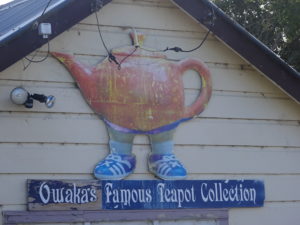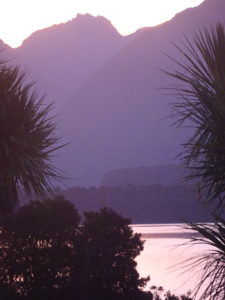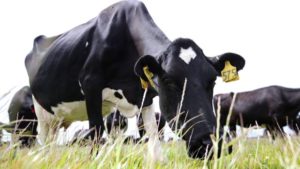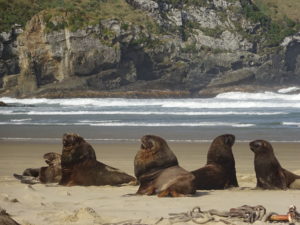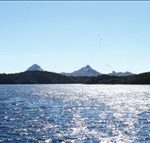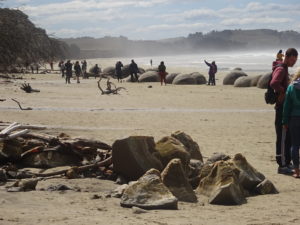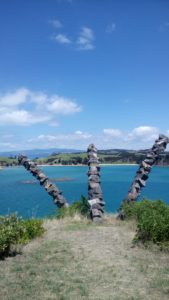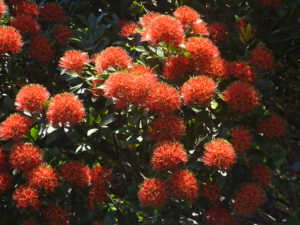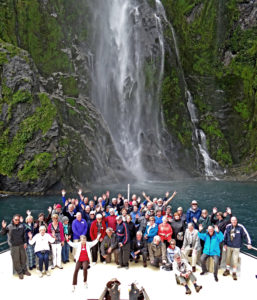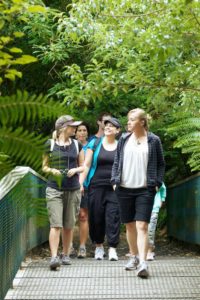Archive for the ‘Our thoughts…’ Category
NZx: April 30th – an (un) certain future?
Naumai
Our environment is changing there can be no doubt. Whether this is due to factors such as human interference, over fishing, climate change, or a combination, many species in NZ face an (un) certain future.
In this blog we explore an (un) certain future for New Zealand sea lions or whakahao/rāpoka. You can out more about these remarkable mammals here and here.
My first encounter with New Zealand sea lions was deep in the myriad of waterways that make up Port Pegasus on Rakiura/Stewart Island. We had seen the sleek creamy brown outline of females in the water as we made our approach to land. Stepping ashore we began to wander through the primeval forest until suddenly a large brown male stood up on it’s hind flippers and roared at us from behind a prostrate rata tree. This was a truly remarkable NZx experience!
Since then I’ve been lucky enough to encounter both sexes on many parts of southern mainland New Zealand and other areas of Rakiura/Stewart Island. A recent journey to Dunedin and the Catlins led to further encounters with a variety of New Zealand sea lions. It is always intriguing when encountering threatened wildlife, that so many of the visitors in these “off the beaten track” places are from overseas. Don’t we as New Zealander’s value what we have?
On a parallel path the potential loss of the Hoiho from mainland New Zealand within a few decades is another indication of how fragile our environment is. You can find more about Hoiho here and here. Despite this bleak lookout for such an iconic species, advocacy around the issue and more importantly potential action, is frustratingly slow and deafeningly quiet.
Where does that leave New Zealand sea lions (whakahao/rāpoka) and their future as an iconic New Zealand species? We have previously commented on the wider issue of economic development and lack of input from tourism operators and environmental interests when it comes to New Zealand sea lions – see our March 2017 blogspot .
Much of our tourism product is based around the broader environment, without a coordinated approach to managing what we have, tourism itself is at risk.
How can we promote ourselves to the world as an environmentally sensitive country, that cares for our taonga, when so much of what makes this country special faces an (un) certain future?
Ka kite ano
NZx: February 10th Manaakitanga in the C21
Naumai
Is this really the best manaakitanga we can offer?
Tourism New Zealand suggests: the meaning of manaakitanga is much broader than a one word or direct translation.
It can be broken down into three parts: mana-ā-ki which loosely translates as ‘the power of the word’ and reminds hosts to be expressive and fluent in welcoming visitors.
Another explanation has the words mana / prestige and ki te tangata / to the people – pointing out the importance of enhancing the mana which covers the integrity, status / prestige, and power of guests.
Here, as our experience suggests, a great day out was left wanting in manaakitanga by our introduction to Fullers ferry and the introduction by staff on arrival at Rotoroa Island.
Our manaakitanga component started off by having to queue for the ferry. No big deal but despite being early morning it was a burning , windless day. People who had queued early inside the perspex cover were eventually forced to abandon their place in line and escape the hot tapped air. It was seriously stifling.
There was general confusion about who was queuing for what. Was this the ferry to Rangitoto, Tiritiri Matangi or Rotoroa Island? No signs, or technology, not even temporary, just two staff that came and went answering the same questions as to the destination.
Two minutes after leaving the wharf we returned – someone had got on the wrong ferry……. That’s despite a handheld scanner that supposedly scanned everybody aboard including our mobile phone downloaded tickets. Only problem was it couldn’t read the bar code on our phone!
On arrival all seventy plus of us were crammed into a small hot shed on the wharf and given a rambling presentation about the history, issues and do’s and dont’s on the Island. We fully support the bio-security intent behind this – but having endured countless windblown ( you can’t here the words and often the speakers aren’t great) welcomes at Tiritiri Matangi and other DOC/partner managed islands, one has to wonder is there a better way? It is human nature to not what to be confined (see Maslow) and to be acknowledged and treated with intelligence. This and other Island welcomes don’t do this! DOC and it’s partners should use other ways of pushing the bio-security message to what is mostly an already knowledgeable audience.
The final straw was when the ranger announced a different ferry departure time back to Auckland than that advertised in the various Fullers media. Normally extra time on an Island such as Rotoroa would be great, but we had organised a busy late afternoon around the quoted departure time and arrival back in Auckland.
The last comment the ranger made before “releasing us” was to invite us back inside the shed before we got on the return ferry – surely not!
In the end it was with much thankfulness that the staff on Rotoroa didn’t invite us back into the hot little shed on the wharf to say haere ra! Everyone was far too busy enjoying the sunshine, swimming off the wharf an enjoying their last minutes on the Island.
Rotoroa Island is a fantastic day out. But two of the key partners need to up their game in the manaakitanga stakes. The basic mana of visitors just isn’t being respected.
Ka kite ano
NZx -20th December 2017: Starry night
Naumai
It’s late December and the rata is flowering beautifully on the West Coast, that’s a South Islander’s version of the pohutakawa ‘Christmas tree”!
In Akaroa our lavender fields are bright purple – Akaroa Organics and ready for harvest.
In our last post for the year we’d like to share a recent experience with one of New Zealand’s leading and award winning activity operators. Checking in we were met by two foreign nationals, they were polite but curse. Unfortunately as soon as we were checked in the two staff spent most of the non contact time (about 30 minutes prior to the activity beginning) trying to redesign the retail space in front of the counter so “they could hide from people”. Really? As front line hosts,and the first personal touch-point between visitors and the company, it should be the opposite. What made it so bad was that they were so nonchalant about this, and everyone in the room who spoke good English could understand what they were saying.
Is this really the type of customer experience our award winning companies are delivering?
The actual activity was interesting but really not what it was hyped up to be. Interaction was limited and much of our time was spent looking at machinery. Trying to interpret a static object requires certain skills, especially when those components dominate the overall experience.
The power of marketing!
Have a great Christmas/Kirihimete and a very happy 2018!
Ka kite ano
NZx: November 26th Sustainable tourism
Naumai
It was heartening, if with a strong sense of deja vu, to see the tourism industry (re) start a process to ensure economic, environmental, host community, and visitor satisfaction and engagement, drive the future of sustainable tourism in New Zealand.
We have of course been here before with initiatives such as Green Globe and Environmental Plans. These initiatives, while driven locally, had a global context and more importantly measured success towards publicly stated goals. Poor decision making and lack of integration resulted in a lost opportunity for the industry and the weakly positioned environmental initiative in the form of the original Qualmark.
You can read more about this current sustainable tourism initiative here: http://sustainabletourism.nz/assets/Uploads/FINAL-TIA-SUSTAINABILITY-BOOK-17.0-web-spreads.pdf
 In a sense there’s nothing really new here. The approach is the industry’s response to rapid growth, increasing public concerns about international visitor numbers, effects of tourism on local communities and the environment and ensuring tourism businesses are economically successful. All sensible and admirable goals – if not a little overdue.
In a sense there’s nothing really new here. The approach is the industry’s response to rapid growth, increasing public concerns about international visitor numbers, effects of tourism on local communities and the environment and ensuring tourism businesses are economically successful. All sensible and admirable goals – if not a little overdue.
Over the years such initiatives have been met with initial support, particularly amongst the larger tourism entities – check out the current list of supporters here. Many other entities will undoubtedly sign up, driven by a mixture of opportunity, marketing push/pull, desire to stay ahead of the pack and some through genuine commitment.
As Fonterra has found their nearly tw0 year old public relations campaign has meet with mixed reaction. Some see through it as typical pr speak , while others believe it has a role to play in ensuring the dairy industries future in an increasingly skeptical New Zealand.
While not suggesting the campaign is no more than tourism’s version of pr speak it will take more than this initiative to make a difference. More needs to be done with both Central Government and Local Government to ensure all parties commitments are in alignment.
Of course it is local communities that drive a lot of input into both forms of Government. We have previously commented on tourism social license to operate in previous blogs.
The 14 commitments are big on the right words but light on measuring and reporting on success, other than financial.
Hopefully this tourism initiative will be both sustainable, wide reaching and effective!
Ka kite ano
